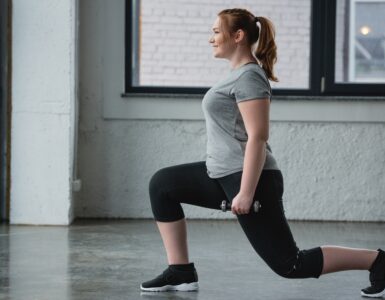Studio 5 Health and Fitness Contributor Melanie Douglass says there are five components to a well balanced workout.
Like many faucets of life, seeing results is dependent on finding balance between competing elements. We balance work, play, and food (okay, well, we try…), now it’s time to find the right balance in workouts. An effective workout has 5 components… and combining these components into every workout can help you get more bang for your exercise buck.
1) Breathing
That’s right, first and foremost, make sure you breathe deeply, in through the nose and out through the mouth as much as possible during your workout. Breathing through the nose ensures the proper proportion of oxygen to carbon dioxide and helps our bodies get more of the vital oxygen we need to burn fat and maximize performance. It’s actually tough to remember to breathe deeply throughout an entire workout… so at minimum, try to take a few deep breaths in the beginning, middle and end of your workout.
2) Cardio
Cardio is a blanket term for “aerobic” activities–that is, activities that get your heart rate up enough to make you feel challenged, but comfortable (still able to speak) and that you can maintain for longer periods of time. Swimming, biking, aerobics, running, walking, dancing, tennis, etc all count as “cardio”. Cardio should make up about 40% of your total workout (so in a 60-minute workout, at least 24 minutes should be cardio). If you start your workout with cardio, take the activity slow for a few minutes until you feel warmed-up and ready to go.
3) Strength
You can use $5.00 resistance bands, dumbbells, body bars, a gym circuit or even your own body weight to do strength training. Push-ups, squats, dips, ab crunches, a video, a trainer… pick something that will help you create resistance in your muscles and go for it. A good intensity for strength training is to pick a weight (or body weight exercise) that feels challenging within 10 – 20 reps. Start with 1 set, work up to 2 and progress to 3 sets of 10 – 15 reps for each exercise. Strength should make up about 40% of your total workout (so in a 60-minute workout, at least 25 minutes should be strength). If you start your workout with strength, take the activity slow for a few minutes until you feel warmed-up and ready to go.
4) Surprise
This is the one we all forget about. Our bodies adapt to doing the same thing day after day, so every good workout has an element of surprise… it can be a 2-minute burst of jumping jacks, a sporadic 5-minute jog (faster than you’ve ever ran before), or even stopping what you are doing and dropping to the floor for 20 push-ups. This one is easy… and fun. In the middle of your workout, just stop and do something different for a couple minutes, and then return to your routine. Surprise should take up about 5% of your workout time (so a 60-minute workout has about 3 minutes of “surprise” activity).
5) Flexibility
Flexibility training has many benefits. First, there’s the mental benefit: relaxing and allowing yourself to revel in how great it feels to be done with another workout. Second, the functional benefits: reducing the incidence and/or severity of muscular imbalances and reducing the risk of injury in future workouts. Flexibility training should take up about 15% of your workout time (so in a 60-minute workout, at least 9 minutes are allowed for flexibility training).















Add comment